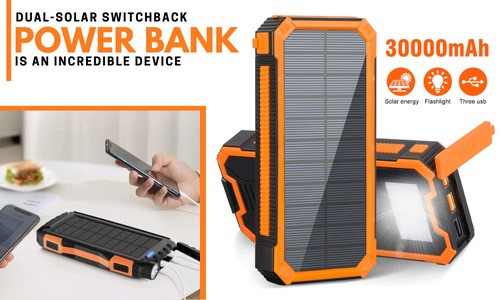The Rise of Electric Scooters: A Convenient and Eco-Friendly Transportation Option
The growing popularity of e-scooters, or electric scooters, has been a prominent trend in urban transportation over the past several years. Several factors contribute to this surge in reputation:
Convenience and Accessibility
Ease of Use: E-scooters are simple to operate and accessible to a wide range of people, including those who may not have a driver's license.
Short-Distance Travel: They are ideal for short-distance travel, often filling the gap between public transportation stops and final destinations, known as the "last-mile" solution.
Encouragement of Multi-Modal Transportation: E-scooters promote a culture of active travel, boosting investments in bike lanes and infrastructure that support walking and cycling.
Urban Mobility: In congested cities, e-scooters offer a quick alternative to cars and public transit, allowing riders to bypass traffic and reach their destinations more quickly.
Technological Advancements
App Integration: Many e-scooter services are integrated with smartphone apps, making it easy to locate, unlock, and pay for rides.
Improved Battery Life: Advances in battery technology have increased the range and reliability of e-scooters, making them more practical for daily use.
Economic Factors
Cost-Effective: E-scooters can be cheaper than other forms of transportation, especially for short trips. They offer an affordable option for those looking to reduce transportation costs.
Shared Economy: The rise of shared e-scooter services, like Lime, Bird, and Spin, allows users to rent scooters on a per-minute basis, eliminating the need for ownership and maintenance.
Also Read: Electric Vehicle Maintenance: Keeping your E-Bike or Electric Scooter Running Smoothly
Environmental Benefits
The environmental benefits of e-scooters are a significant factor driving their adoption, especially as cities and individuals become more environmentally conscious.
Reduced Emissions: E-scooters produce zero tailpipe emissions, contributing to reduced air pollution in urban areas. By replacing short car trips with e-scooter rides, they help decrease the overall carbon footprint.
Lower Energy Consumption: Compared to cars and even some public transportation options, e-scooters consume significantly less energy per mile traveled. This makes them a more sustainable option for short trips.
Decreased Traffic Congestion: By offering an alternative to cars for short trips, e-scooters can help reduce traffic congestion, leading to less idling and lower emissions from other vehicles.
Sound Solutions: E-scooters are quiet compared to gas-powered vehicles. This can make a big difference in reducing noise pollution, making cities more peaceful places to live.
Promotion of Public Transit: E-scooters can complement public transit systems by providing a convenient means of covering the first or last mile of a journey, encouraging more people to use public transportation and reducing overall car usage.
Challenges and Considerations
While the benefits of e-scooters are substantial, there are challenges and considerations that need to be addressed:
Infrastructure: The lack of dedicated lanes and parking spaces for e-scooters can lead to safety issues and cluttered sidewalks.
Regulations: Cities need to implement and enforce regulations to ensure safe and responsible use of e-scooters.
Lifecycle Environmental Impact: The production and disposal of e-scooters, especially batteries, have environmental impacts that need to be managed. Ensuring sustainable manufacturing practices and effective recycling programs are crucial.
Safety Concerns: With the increase in e-scooter usage, there has been a rise in accidents involving scooters. Improving rider education and implementing safety measures are essential to mitigate these risks.
The growing popularity of e-scooters is driven by their convenience, technological integration, and economic benefits, along with significant environmental advantages.
Factors to Consider When Choosing an Electric Scooter
Range: Consider how far you need to travel on a single charge. The range varies based on battery capacity and riding conditions.
Speed: Electric scooters have different top speeds. If you need a faster ride, opt for models with higher maximum speeds. Keep in mind that local regulations may limit the speed on public roads.
Portability: Portability matters, especially if you plan to carry your scooter onto public transportation or store it in tight spaces.
Weight Capacity: Check the scooter’s weight capacity. Ensure it can comfortably support your weight. Some scooters have weight limits around 220 lbs (100 kg), while others can handle more.
Features:
Brakes: Consider the braking system. Disc brakes or regenerative braking provide better control.
Tires: Pneumatic (air-filled) tires offer a smoother ride, while solid tires require less maintenance.
Lights: Look for scooters with front and rear lights for safety during night rides.
Suspension: Good suspension improves comfort on uneven roads.
Display and Controls: Clear displays and intuitive controls enhance the riding experience.
Remember to check local laws and regulations regarding electric scooters, wear protective gear, and choose a scooter that aligns with your specific needs.
Types of Electric Scooters: Finding the Right Fit
E-scooters come in all shapes and sizes, each suited to different riding styles and needs. Here's a breakdown of the most common types:
1. Commuter E-Scooters:
These are the workhorses of the e-scooter world. Built for efficiency and comfort on concrete surfaces, they're ideal for zipping around town or conquering your daily commute. They typically have:
1. Moderate weight (around 40 lbs) for easy maneuvering.
2. Mid-range speeds (around 15-20 mph) for safety in traffic.
3. Solid tires that can handle bumps and cracks on city streets.
4. Fenders to keep you dry on rainy days.
5. Phone mounts and baskets for added functionality.
2. Off-Road E-Scooters:
Calling all adventure seekers! Off-road e-scooters are built for tackling rough terrain, with features that allow you to explore dirt paths, trails, and even light off-roading.
1. Thicker, knobby tires for better grip on loose surfaces.
2. More powerful motors for handling inclines and uneven terrain.
3. Front and rear suspension systems to absorb bumps and jumps.
4. Higher ground clearance to avoid scraping on rocks and obstacles.
5. Heavier weight (often over 50 lbs) for stability on rough rides.
3. Foldable E-Scooters:
Portability is king with foldable e-scooters. Perfect for urban dwellers who need to store their scooter on public transport or indoors, they're all about convenience. Expect:
1. Lightweight designs (often under 40 lbs) for easy carrying.
2. Collapsible handlebars and stems for compact storage.
3. May have smaller wheels and less powerful motors for a lower price point.
4. Ideal for shorter rides and quick commutes.

4. Heavy-Duty E-Scooters
Designed for users needing a higher weight capacity and enhanced durability.
Weight Capacity: Higher weight limits (often up to 300 lbs or more) to accommodate a wider range of riders.
Durability: Sturdier frame and construction to support heavier loads and frequent use.
Range and Speed: Typically offer longer ranges and higher speeds to ensure reliable performance for all users.
Comfort: Enhanced features like wider decks, more substantial tires, and better suspension systems.
5. Luxury and High-Performance E-Scooters
Offer premium features, high performance, and advanced technology.
Range: Extended range (up to 50 miles or more) for long-distance travel.
Speed: High top speeds (up to 40 mph or more) for quick travel.
Technology: Advanced features like GPS, smartphone connectivity, and custom riding modes.
Comfort and Safety: Superior suspension systems, high-quality brakes, and enhanced lighting systems.
Build Quality: Premium materials and construction for a superior riding experience.
E-Bikes vs. Electric Scooters: Understanding the Differences
When comparing e-bikes (electric bicycles) and electric scooters, several key factors come into play. Both offer unique advantages and are suited for different types of users and scenarios. Here’s a detailed comparison:
1. Speed
E-Bikes:
Speed Range: Typically range between 15-28 mph, with some high-performance models exceeding this.
Regulations: Speed limits often depend on local laws and the class of the e-bike. In many regions, e-bikes are classified into different classes based on their top speed and whether they provide pedal assistance only or have a throttle.
Electric Scooters:
Speed Range: Generally range from 10-25 mph, with high-performance models reaching up to 40 mph.
Regulations: Similar to e-bikes, speed limits for e-scooters are often regulated by local laws, with restrictions typically around 15-20 mph for public use.
2. Range
E-Bikes:
Range: Typically offer a range of 20-50 miles on a single charge, with some advanced models reaching up to 100 miles.
Factors Influencing Range: Rider’s pedaling effort, terrain, battery capacity, and assist level significantly impact range.
Electric Scooters:
Range: Generally range from 10-30 miles on a single charge, with high-end models offering up to 50 miles.
Factors Influencing Range: Rider weight, terrain, speed, and battery size are primary factors affecting range.
3. Power
E-Bikes:
Motor Power: Typically range from 250W to 750W, with some models having higher power for off-road use or high-speed commuting.
Assist Levels: E-bikes often feature multiple pedal-assist levels and a throttle for added power when needed.
Electric Scooters:
Motor Power: Typically range from 250W to 1000W, with high-performance models featuring dual motors and power exceeding 2000W.
Acceleration: Generally provide quick acceleration, especially models with higher power ratings.
4. Portability
E-Bikes:
Weight: Usually weigh between 40-70 lbs, making them less portable than scooters.
Folding Models: Some e-bikes are foldable, but even these are bulkier and heavier compared to foldable e-scooters.
Storage: Requires more storage space due to their larger size.
Electric Scooters:
Weight: Typically weigh between 20-50 lbs, with foldable models being more portable.
Folding Capability: Most electric scooters are designed to be easily foldable and portable, making them convenient for carrying onto public transportation or storing in small spaces.
Storage: More compact and easier to store in small apartments or offices.
5. Riding Experience
E-Bikes:
Comfort: Generally more comfortable for longer rides due to larger wheels, better suspension, and the option to sit.
Versatility: Suitable for various terrains, including urban streets, trails, and rougher off-road paths.
Exercise: Offers a combination of exercise and motor assistance, allowing riders to pedal as much or as little as they want.
Electric Scooters:
Comfort: Generally less comfortable for long rides due to smaller wheels and standing position, though some models have suspension systems to improve ride quality.
Convenience: Easier to hop on and off for short trips and quick errands. Standing position can be tiring for longer rides.
Urban Use: Ideal for short urban commutes and "last-mile" connectivity but less suited for rough or uneven terrain compared to e-bikes.
Each has its advantages, making them suitable for different lifestyles and transportation needs.
Advantages of E-Bikes: Power, Comfort, and Range
Here are some benefits of e-bikes for longer commutes and recreational use:
1. Increased Speed and Range: E-bikes allow you to ride faster and cover greater distances with less effort. The electric motor provides an extra boost, making longer commutes more manageable.
2. Conquer Hills and Headwinds: Whether you’re climbing steep hills or facing strong headwinds, e-bikes make it easier. The motor assists you, so you can tackle challenging terrain without breaking a sweat.
3. Less Physical Effort: E-bikes reduce the strain on your muscles, especially during extended rides. You’ll arrive at your destination feeling less fatigued.
4. Improved Health and Fitness: While e-bikes provide assistance, you still pedal, which contributes to cardiovascular health and overall fitness. They encourage more people to cycle, promoting an active lifestyle.
5. Fun Factor: E-bikes combine the joy of cycling with the thrill of effortless speed. Commuting or exploring becomes an enjoyable experience.
6. Convenience: E-bikes are ideal for longer commutes, offering extra power to cover greater distances. They’re practical for varied terrains, including hilly areas.
7. Excellent Value: By opting for e-bikes, you save money on fuel and reduce your carbon footprint. Extended battery life allows you to travel longer distances without physical exhaustion.
8. Environmentally Friendly: Each e-bike on the road means fewer cars for short trips, reducing air pollution and noise disruption. E-bikes contribute to a healthier environment.
Strengths of Electric Scooters: Convenience, Portability, and Urban Riding
In the bustling heart of the city, where traffic jams and tight spaces reign supreme, e-scooters emerge as a champion for short trips.
Conquer the Commute: Ditch the crowded bus or train and scoot to your destination in style. E-scooters are perfect for short commutes, weaving through traffic and side streets to get you there faster.
Parking Paradise: Forget the frustration of finding a parking spot. E-scooters require minimal space and can be parked almost anywhere.
Nimble Navigators: Traffic jams? No problem! E-scooters can squeeze through narrow streets and bike lanes, bypassing congested roads and getting you to your destination quicker.
Last-Mile Link: Public transport doesn't always take you door-to-door. E-scooters bridge that gap perfectly. Hop off the bus or train and scoot the final stretch to your office or home for a seamless and speedy commute.
Eco-Warrior on Wheels: Be kind to the environment on your short trips. E-scooters produce zero tailpipe emissions, contributing to cleaner air in urban areas. It's a small change with a big impact, especially in cities battling pollution.
Affordable Adventures: E-scooters offer a budget-friendly way to travel. Compared to ride-sharing services or taxis, rental e-scooters are a much more cost-effective option for zipping around town.
Spontaneous Scouter: The beauty of e-scooters lies in their spontaneity. See a friend across the street? Need to grab a coffee a few blocks away? E-scooters are readily available and require no planning or reservations. Just hop on and go!
Fun Factor: Let's face it, riding an e-scooter is just plain fun! It injects a dose of joy and excitement into your short trips, making even errands feel like mini-adventures.
So, next time you're facing a short trip in a busy urban environment, ditch the hassle and embrace the ease of e-scooters.
The Perfect Choice for You: Consider Your Needs and Preferences
1. For short commutes and city dwellers:
- Electric Scooters (for very short distances)
- Electric Bikes (for slightly longer distances and some exercise)
- Small, compact EVs (easy to maneuver and park in tight spaces)
2. For longer commutes and families:
- Mid-size EVs (balance of range, comfort, and cargo space)
- SUVs or Crossovers (more space for passengers and cargo)
3. For performance enthusiasts:
- Performance EVs (faster acceleration and sportier handling)
Safety First: Essential Gear and Riding Tips
Safety gear is crucial for all riders, whether on e-bikes, e-scooters, or any other electric vehicle. Here are some essential tips:
1. Helmet: Always wear a properly fitting helmet. It protects your head in case of falls or collisions.
2. Reflective Clothing: Make yourself visible, especially during low-light conditions. Reflective vests or clothing enhance visibility to other road users.
3. Gloves: Gloves provide grip and protect your hands during rides. They also shield against wind and cold.
4. Knee and Elbow Pads: These protect your joints from impact and abrasions.
5. Closed-Toe Shoes: Sturdy shoes with good traction prevent slips and protect your feet.
6. Eye Protection: Sunglasses or clear glasses shield your eyes from wind, debris, and insects.

Basic Riding Tips:
1. Be Aware: Stay alert and aware of your surroundings. Watch for pedestrians, vehicles, and obstacles.
2. Obey Traffic Rules: Follow traffic signals, stop signs, and speed limits. Yield to pedestrians.
3. Use Hand Signals: Signal your turns using hand gestures to communicate with other road users.
4. Maintain Safe Speed: Adjust your speed based on the environment. Slow down near intersections and crowded areas.
5. Keep Both Hands on the Handlebars: Maintain control by keeping both hands on the grips.
6. Avoid Distractions: Don’t use your phone or listen to music while riding.
7. Check Your Vehicle: Regularly inspect brakes, tires, and lights. Ensure your e-bike or e-scooter is in good condition.
The Future of Electric Scooters: Innovation and Sustainability
E-scooters are zipping around cities worldwide, and for good reason. But the fun doesn't stop at convenience – e-scooter technology is constantly evolving to make them a more sustainable and attractive transportation option.
Battery Boost: Range anxiety used to be a major concern, but advancements in battery technology are changing the game. Lithium-ion batteries are becoming lighter and more energy-dense, allowing e-scooters to travel farther on a single charge.
Faster Charging: No more waiting hours for a depleted battery. Rapid charging technology is emerging, allowing e-scooters to be juiced up in a fraction of the time.
Smarter Scooters: E-scooters are getting a brain! Connectivity features are being integrated, allowing riders to use smartphone apps to track battery life, locate available scooters, and even unlock them.
Safety First: Features like anti-lock braking systems (ABS) prevent wheel lockup during sudden stops, while improved lighting systems enhance visibility for both riders and pedestrians. Some models are even exploring geo-fencing technology to restrict scooter usage in certain areas or limit speeds in high-traffic zones.
Sustainable Materials: Manufacturers are exploring the use of recycled materials in e-scooter components, reducing their environmental footprint throughout the lifecycle. Additionally, swappable battery systems are being developed to minimize battery waste.
Find Your Perfect Ride: Explore Addmotor's Electric Scooter Selection
If you’re looking for electric bikes and trikes, Addmotor offers a diverse selection. Here are some options:
1. GRANDTAN X 750W Rear Motor Electric Trike: With full suspensions, this trike is priced at $3299.00 (preorder price with $300 off).
2. CITYTRI E-310: The highest-spec’d electric trike under $2000 in the world, priced at $1999.00.
3. SOLETRI M-366X Rear Drive Full Suspension Electric Trike: Suitable for two adults, priced at $2999.00.
4. Grandtan II 2024 750W Rear Motor Electric Trike: Features front suspension and costs $2699.00.

5. ARISETAN II M-360 2024: World’s first semi-recumbent electric tricycle with a rear motor, priced at $2999.00.
6. SPYTAN 2 Front Wheel Electric Bike: Ideal for riders 4’9’‘-5’9’', priced at $2599.00.
7. GREATTAN L Dual-Battery Electric Trike: Includes a passenger seat and costs $3899.00.
8. TRIKETAN II M-330 2024: A best-selling electric tricycle in the USA, priced at $2699.00.
9. CHOPPTAN M-70 Electric Moped Style Bike: Priced at $1499.00.
























